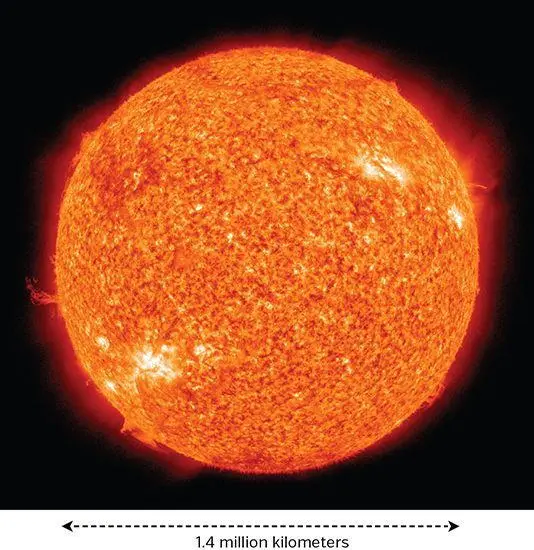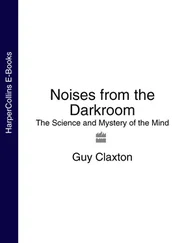On another occasion, I wrote dozens of equations and diagrams on Professor Brand’s blackboards, and watched as Chris filmed in the Professor’s office with Michael Caine as the Professor and Jessica Chastain as Murph. [1] See Chapter 25.
I was astonished by the warm and friendly deference that Caine and Chastain showed me. Despite having no role in the filming, I was notorious as Interstellar ’s real scientist, the guy who inspired everyone’s best effort to get the science right for this blockbuster movie.
That notoriety triggered fascinating conversations with Hollywood icons: not just the Nolans, McConaughey, and Hathaway, but also Caine, Chastain, and others. A fun bonus from my creative friendship with Lynda.
Now comes the final phase of Lynda’s and my Interstellar dream . The phase where you, the audience, have become curious about Interstellar ’s science and seek explanations for bizarre things you saw in the movie.
The answers are here. That’s why I wrote this book. Enjoy!
Our universe is vast. Achingly beautiful. Remarkably simple in some ways, intricately complex in others. From our universe’s great richness, we’ll need only a few basic facts that I’ll now lay bare.
Our universe was born in a gigantic explosion 13.7 billion years ago. The explosion was given the irreverent name “the big bang” by my friend Fred Hoyle, a cosmologist who at that time (the 1940s) thought it an outrageous, fictional idea.
Fred was proved wrong. We’ve since seen radiation from the explosion, even in just the last week (as I write this) tentative evidence for radiation emitted in the first trillionth of a trillionth of a trillionth of a second after the explosion began! [2] Google “gravitational waves from the big bang” or “CMB polarization” to learn about this amazing March 2014 discovery. I give some details at the end of Chapter 16.
We don’t know what triggered the big bang, nor what, if anything, existed before it. But somehow the universe emerged as a vast sea of ultrahot gas, expanding fast in all directions like the fireball ignited by a nuclear bomb blast or by the explosion of a gas pipeline. Except that the big bang was not destructive (so far as we know). Instead, it created everything in our universe, or rather the seeds for everything.
I would love to write a long chapter about the big bang, but with great force of will I restrain myself. We don’t need it for the rest of this book.
As our universe expanded, its hot gas cooled. In some regions the gas’s density was a bit higher than in others, randomly. When the gas got cold enough, gravity pulled each high-density region inward on itself, giving birth to a galaxy (a huge cluster of stars and their planets and diffuse gas between the stars); see Figure 2.1. The earliest galaxy was born when the universe was a few hundred million years old.
There are roughly a trillion galaxies in the visible universe. The largest galaxies contain a few trillion stars and are about a million light-years across; [3] A light-year is the distance light travels in one year: about a hundred trillion kilometers.
the smallest, about 10 million stars and a thousand light-years across. At the center of most every large galaxy there is a huge black hole (Chapter 5), one that weighs a million times the sun’s weight or more. [4] In more technical language, its mass is a million times that of the Sun’s or more, which means its gravitational pull, when you are at some fixed distance away from it, is the same as a million Suns’. In this book I use “mass” and “weight” to mean the same thing.

Fig. 2.1. A rich cluster of galaxies named Abell 1689 and many other more distant galaxies, as photographed by the Hubble Space Telescope.
The Earth resides in a galaxy called the Milky Way. Most of the Milky Way’s stars are in the bright band of light that stretches across Earth’s sky on a clear, dark night. And almost all the pinpricks of light that we see in the sky at night, not just those in the bright band, also lie in the Milky Way.
The nearest large galaxy to our own is called Andromeda (Figure 2.2). It is 2.5 million light-years from Earth. It contains about a trillion stars and is about 100,000 light-years across. The Milky Way is a sort of twin to Andromeda, about the same in size, shape, and number of stars. If Figure 2.2 were the Milky Way, then the Earth would be where I placed the yellow diamond.
Andromeda contains a gigantic black hole, 100 million times heavier than the Sun and as big across as the Earth’s orbit (the same weight and size as Interstellar ’s Gargantua; Chapter 6). It resides in the middle of the central bright sphere in Figure 2.2.

Fig. 2.2. The Andromeda galaxy.
Stars are large, hot balls of gas, usually kept hot by burning nuclear fuel in their cores. The Sun is a fairly typical star. It is 1.4 million kilometers across, about a hundred times larger than the Earth. Its surface has flares and hot spots and cooler spots, and is fascinating to explore through a telescope (Figure 2.3).
Eight planets, including the Earth, travel around the Sun in elliptical orbits, along with many dwarf planets (of which Pluto is the most famous) and many comets, and smaller, rocky bodies called asteroids and meteoroids (Figure 2.4). Earth is the third planet from the Sun. Saturn, with its gorgeous rings, is the sixth planet out and plays a role in Interstellar (Chapter 15).

Fig 2.3. The Sun as photographed by NASA’s Solar Dynamics Observatory.

Fig. 2.4. The orbits of the Sun’s planets and Pluto, and a region containing many asteroids.
The solar system is a thousand times bigger than the Sun itself; light needs eleven hours to travel across it.
The distance to the nearest star other than the Sun, Proxima Centauri, is 4.24 light-years, 2500 times farther than the distance across the solar system! In Chapter 13, I discuss the awful implications for interstellar travel.
Stellar Death: White Dwarfs, Neutron Stars, and Black Holes
The Sun and Earth are about 4.5 billion years old, about a third the age of the universe. After another 6.5 billion years or so, the Sun will exhaust the nuclear fuel in its core, the fuel that keeps it hot. The Sun then will shift to burning fuel in a shell around its core, and its surface will expand to engulf and fry the Earth. With the shell’s fuel spent and the Earth fried, the Sun will shrink to become a white dwarf star, about the size of the Earth but with density a million times higher. The white dwarf will gradually cool, over tens of billions of years, to become a dense, dark cinder.
Stars much heavier than the Sun burn their fuel much more quickly, and then collapse to form a neutron star or a black hole.
Читать дальше
















